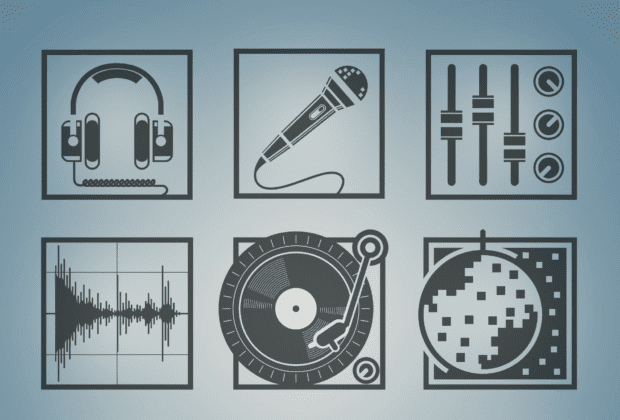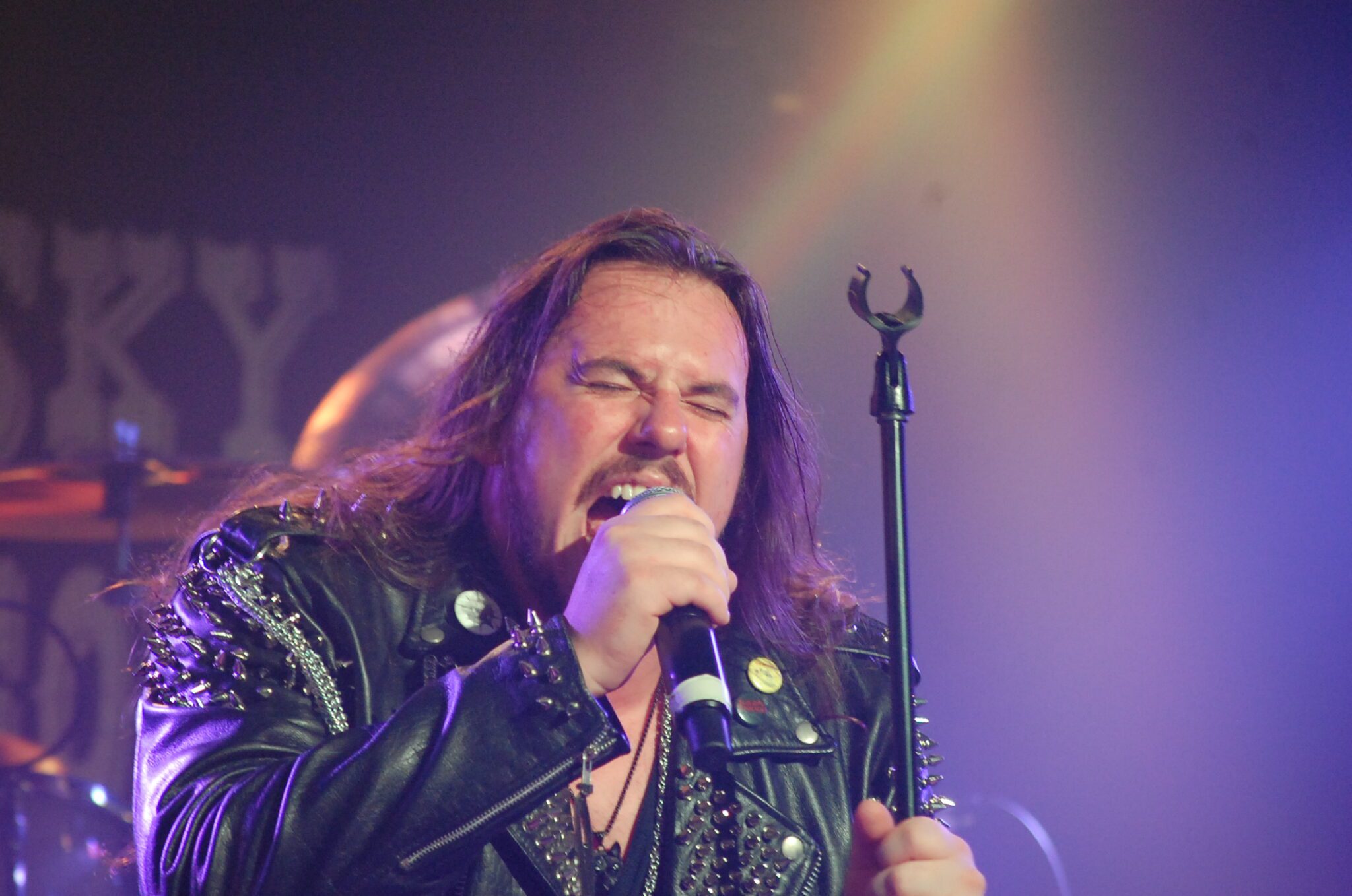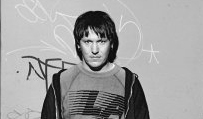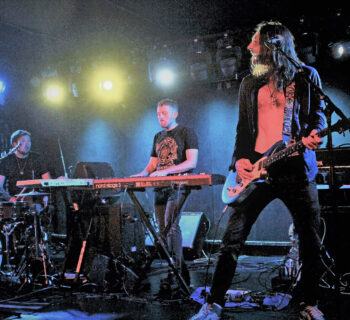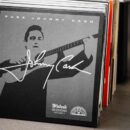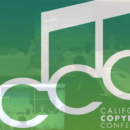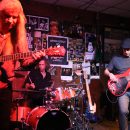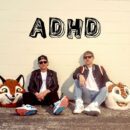By Tracey and Vance Marino
The following is excerpted from the book Hey! That’s My Song!
with permission by the authors and Rowan & Littlefield.

HIT ME WITH YOUR BEST SHOT: THE INSTRUMENTATION MUST BE SPOT ON
What makes a genre a genre? The most obvious element is the instrumentation: Rock music has distorted guitars and powerful drums. Latin music has characteristic percussion instruments, like bongos, congas, and timbales. Hip-hop is all about the electronic drums. Is it possible to write and record a rock cue without distorted guitars? Yes, it is, but why would you want to work that hard? Most genres embrace instruments that are inherent to that style of music.
The listener should know within seconds of the start of the cue what kind of music it is, primarily due to the instrumentation. A two-second Dobro slide tells you you’re in the southern United States. A koto strum tells you you’re somewhere in Japan or perhaps an Asian restaurant. A church organ tells you you’re, you guessed it, in a church or chapel.
Non-musicians who hear a rock cue might not be able to identify whether that sound is a Les Paul played through a cranked-up Marshall amp or a Stratocaster played through a Vox amp or even that it’s a guitar at all, but they know it’s a rock sound. Don’t be afraid to use obvious instrumentation. It gets the message across.
As musicians, identifying instruments in a music recording should be one of the easier things you do. However, there are genres that use instruments with which you may not be familiar. Does that Latin cue have a shaker or a maraca? Or both? Or some other unique percussion instrument that’s not as recognizable? Thankfully, you live in the Internet age, and these things can be researched. Depending on how authentic you need to be, you might find that some Latin styles always use a shaker and never a maraca, or the other way around. Use the resources that are available to you to learn which instruments are typically used in various genres of music, especially ethnic styles.
A constant in instrumental cues is the use of orchestral strings and other orchestral elements. They are found in many cues, sometimes in pure orchestral form but often in combination with instruments from other genres (even hip-hop). Strings are combined frequently with synths and pads, which are synthesized sounds that fade in slowly and sustain. Keep your ears open.
FOR ALL WE KNOW
An in-depth knowledge of music theory is not necessary for you to be a skilled composer or songwriter, but it certainly helps broaden your musical palette. There are some who are very successful but have an incomplete understanding of the intricacies of music and its terminology. However, the goal here is to shed light on the subjects involved in creating and marketing your music for sync and illuminate your path to success. In addition to aiding in the composing and songwriting process, understanding the language of music is very helpful when communicating with other musicians, producers, and engineers. This knowledge is also beneficial when encountering musical terminology in recording equipment and software.
You are encouraged to learn more about how the beautiful sounds of music come together to create an emotional response in a listener.
HERE IT IS IN BLACK AND WHITE
Music theory makes sense when it is expressed in terms of looking at the notes on a piano keyboard. It is not necessary to be a keyboardist, but knowing visually how the notes are laid out is advantageous.
In the music production world, an electronic keyboard is more convenient than an actual piano, for many reasons:
• It will work with the recording software.
• It never goes out of tune.
• You may use several different sounds rather than only a piano sound.
• It makes editing much easier.
THE BLANK CANVAS AND SELECTING YOUR MUSICAL PALETTE
Like a painter who has chosen the colors on their palette, once you know what instruments to use, the next step is to focus on the music itself. Does music in the genre you are writing use major scales? Minor scales? Pentatonic scales? Modes? What about the chords? Majors? Minors? Open fifths? Or perhaps no clearly defined chords but notes and harmonies that imply chords? You could try to write a jazz cue with only major and minor chords and scales, but it won’t sound very authentic. The complexity of the chords and scales in jazz make it sound jazzy. It’s very important to compose your music to sound like the genre in which you’re writing.
How are the instrumentation and music put together to create a vibe? A rock band made up of drums, bass, and two electric guitars playing open fifth chords and minor pentatonic scales can create different vibes. A fast tempo, with everybody pounding on their instruments, can create an exciting or frenetic vibe, while the same band at a slower tempo with a shuffle groove, and everybody playing fewer notes at a lower volume, can create a more subdued or laidback vibe. Tempo and intensity are important things to consider in creating a feel.
Attitude is another thing to think about. Music that is played or sung off pitch or out of time has an effect on the listener. In this digital recording world you may have a tendency to “fix” everything you record. However, leaving the raw performance as it was recorded may actually give you the vibe for which you’re looking. Some scenes call for music that will make the viewer uncomfortable, and this is one way to achieve that result.
MELODIES, RIFFS, AND MOTIFS—OH, MY!
As is often the case with any artistic endeavor, there’s no one rule to follow when writing melodies for sync music instrumentals. The nature of melodies is frequently genre-dependent. Some genres use melodies that are very similar to songs, while others use short musical motifs instead of melodies. This is another thing to note when researching a genre.
For instance, Caribbean music features, characteristically, a prominent steel drum melody. In addition to using major scales, the melodies in this genre use syncopated rhythms and are very hooky. They may start with an eight-note melody, repeat it with a variation, contrast with three long notes, and then repeat the first melody, ending on a tonic note. Later in the piece, a steel drum harmony in thirds may be added, as this is commonplace in this style.
STILL THE SAME: SCORING POINTS WITH THE MUSIC EDITOR
A good rule in sync music is to always keep tempo and key consistent, with no changes throughout. It’s also a good idea to have clear delineations between the sections of the piece. These are called edit points and will occasionally include a very short silence to make it easier for the music editor to work with your music.
A music editor puts (syncs) your music together with the video of a show. Anything you can do to make the music editor’s job easier will increase your placement opportunities. Why? Because the music editors are often the ones making the final decision about which piece of music is used. Regarding instrumentals,
• Use the same key throughout the instrumental piece.
• Keep the tempo and groove consistent throughout the piece so the sections sound cohesive.
• Don’t change the overall vibe.
• Bring instruments in or out, making sure their entrances are not jolting.
• Avoid drastic changes within a piece.
DON’T GO OVERBOARD WHEN WRITING CUES
Many years ago, a music publisher emphatically told us, “You guys are writing too much! There’s no need to overwrite. Ever!” This was career-changing advice for us; he had thrown us a musical life preserver.
The takeaway? We learned that a two-minute piece of music did not require composing two actual minutes of music! What?? “That’s right,” the publisher said. “Write less, arrange more.” We took his advice and started writing eight-bar A sections and then repeated the A sections with interesting arrangement variations. We were amazed how seemingly simple but challenging this technique was—yet very effective in the end.
HEY! READ THIS!
So, how long does it take to write a two-minute instrumental cue? Longer than two minutes. When we started writing music for sync, it took us three weeks to finish a two-minute cue. Really. Of course, we had a lot to learn about composing, arranging, recording, producing, and mixing. Now it takes us about six to eight hours to finish one in a genre with which we are familiar. If it’s a new style for us, or if we’re using new software, it takes longer. Composers each work at their own pace. Streamlining the process and being familiar with your tools is essential. The important thing is that the final product must be top-notch and usable.
I’LL TAKE “MUSIC GENRES” FOR $500, PLEASE
People are accustomed to thinking about music in terms of its genre, such as hip-hop, rock, country, blues, soul, pop, or jazz. In the world of sync music, in addition to genre, think about how the music will be placed. Songs and instrumentals of these genres are used in films and TV shows. However, composers and songwriters of sync music frequently consider the end use of their music while it is being created. These uses include music for commercials, movie trailers, sports, news, dramas, video games, reality cable TV shows, and music that identifies geographic locations. Music written for these purposes may incorporate elements of the genres mentioned above, but they are handled differently. Here are some typical characteristics of music written for these uses:
• Commercials. Music written specifically for commercials is likely to be happy, upbeat, and in a major key, with positive, optimistic song lyrics and themes.
• Movie trailers. Trailers consistently follow a three-part visual formula—an intro, a buildup, and a climax—so the music that is composed must follow the same formula: intro, buildup, and climax.
• The finished trailer may contain one cue from start to finish, or a different cue may be used for each of the three sections.
• In many cases, bits and pieces from dozens of cues may be included in the final version.
• The composition should not be complicated. Simple music that is not highly melodic is best; the challenge lies in the production and mixing, which must be top-level.
• This is not to say that trailer cues are easy to write. The goal is to make simple music sound interesting for two to three minutes while following the formula and incorporating acoustic and electronic sounds. A common request for music in trailers is that it sound “epic.”
• Sports. Viewers of sports programming expect high-energy, intense music that fits the competitive attitude of their games. Aggressive styles, such as rock, hip-hop, orchestral, or a combination of these, are standard in accompanying sports. This music is not for the timid.
• News. Music for news is typically a combination of electronic and orchestral elements. Brass and strings make it sound very important and serious. Mid-to-up-tempo cues bring the urgency required.
• Tension. This is a very broad category. It frequently combines elements of electronic, orchestral, hip-hop, and rock. It’s often in a minor key and creates tension via dissonant harmonies and pulsing beats.
• Video games. Most of the music in video games is written by a composer. However, depending on the subject and length of the game, the rest may be licensed. As with many dramatic movies and TV shows, the score composer for a video game does not usually write songs with lyrics for the project.
• Because of the varying lengths of the scenes in video games, the music is written specifically so that it can be looped: the end of the cue should seamlessly lead back to the beginning. This way, the same music can accompany a short scene or a long scene. If you write music for video games, it is imperative that you actually play video games.
• Scene-setter or location music. When a story moves to a new location, a change in the music and images lets the viewer know that the characters are in a different place. This is known as scenesetter music. Using instrumentation that is commonly associated with the geographic location, as well as musical scales, harmonies, and rhythms that are characteristic in music from the region are important factors in composing effective music.
About Writing Instrumentals for Sync
I mostly compose the underscore for various projects. When I write tracks for a production music library, the two most helpful tips have been on two levels: First, regarding the structure of my composition, I use song form A–A–B–A, where I compose the A theme and two more fleshed-out variations, then a contrasting B theme. Second, I keep the music focused on one emotion/tone (each track needs to focus on one emotion and develop it over two minutes). The B theme needs to be in the same overall vein but not too different.
– Penka Kouneva,
Composer for film, TV, and video games
For me personally, the impact of getting sync licensing for my music has been immense. I have always been an artist before anything, so ultimately licensing has just helped put more of a light on my art, and it has financially enabled me to have the flexibility and fuel to keep making and releasing that art independently.
– Katie Herzig,
Artist, Songwriter, and Producer
The most important criterion for music to be considered for sync, in my opinion, is sticking to a singular emotion for a cue. Make it easier for a music editor to fit it into a scene. Music should be functional and not self-serving. Your job is to support the scene and define the emotion. It should never be, “Hey! Look at me!”
– Steve Barden,
Composer and Author
Don’t send reality TV underscore tracks to a boutique trailer library, and don’t send music for commercials to a reality TV library, and so on. A lot of the really successful writers in production music write music with a specific intent and purpose and can tell you immediately what that was.
– Derek Jones,
Director of Creative Services at
Megatrax Production Music
ARC OF A DIVER: HOW DEEP IS YOUR SONG?
A common request from music supervisors is a trailerized version of a familiar song. As mentioned earlier, this is usually an epic, over-the-top, moody, or dramatic treatment of a song and may include edgy sound throughout. Conversely, the song could be a stripped-down version with haunting vocals, eerie synth pads, and in a minor key. Perhaps it could be an arrangement done in a completely different genre. Interesting spins on a song include taking a rock song and turning it into a simple ukulele track or taking a simple folk song and making it a punk rock anthem. The possibilities are endless.
Before recording a cover song—or trailerizing it—find out all you can about the song and the people who created it. What’s the song’s story? This is known as doing a “deeper dive,” and it can affect how you interpret the song, bringing it to another level.
To begin diving into the song, watch and read interviews, search the Internet, find background information, and discover all you can about the song’s history:
• How did the song come to be, and why?
• Who wrote and produced it?
• How did the artist’s (or band’s) style and musicianship affect the song?
• What was happening locally, or in the world, that may have affected the song’s creation?
• Were the songwriters going through a life-changing event that inspired them to write the song?
• Which other artists and bands have covered the song? (Many established and up-and-coming artists post their covers on streaming platforms.)
• After doing research, why do you think this song resonates with artists—and, more importantly, the listeners?
• Does this song get sync placements and if so, in which media, typically?
• How will you put your own spin on the melody, chords, arrangement, and production, and will these elements bring a new meaning or a different emotional quality to the song? (This separates a good rendition of a song from an amazing one.)
About Writing Songs for Sync
Choose an attention-grabbing title. My most successful sync song, “Show Me the Honey,” written to a track by Sharron March, has gotten more than 20 major placements, including Scrubs, Friday Night Lights, Kickin’ It Old Skool, and Assassination Games. I have no doubt that the unique title played a big role in that song’s success.
– Jason Blume,
Emmy®-winning Hit Songwriter and Author
I go to a beautiful place and make up songs into my iPhone video. That is the “El Blurto” phase. Then I look at them later with coffee and a yellow pad.
– Jack Tempchin,
Writer of “Peaceful Easy Feeling,”
Member of the Songwriters Hall of Fame
Songs in media only have a few seconds to establish themselves so the viewer understands what feeling the music is contributing to a scene. If you are making songs for media, be sure that within five seconds it expresses a specific vibe: Female Pop, Indie Rock, Retro Funk, Dirt Road Blues, etc. And then nail that vibe with authenticity.
– John Houlihan,
Music Supervisor
Write what you know. If you’ve never been on a “Freight Train to Nowhere,” don’t write about it.
– Steve Dorff,
2018 Inductee to the Songwriters Hall of Fame
Songwriting has really helped me both be flexible and stubborn! You’ve got to be willing to pivot, change, and rearrange ideas like a puzzle—and also wait and protect those magical moments or hooks that are undeniably moving or good. It’s a balance between the two. As someone who is very stream-of-consciousness in the way I create, capturing a good idea is half the trick.
– Katie Herzig,
Artist, Songwriter, and Producer
Lyrically, let the story and the imagery be provided by the filmmaker, not the songwriter. Specifics belong to the emotional impact, not to the visuals. But a nifty way around this is the metaphorical, symbolic use of imagery. Play with the “shape” of melodies, and vary them in chunks of melody (motifs). I love making games or experiments out of the writing process. Try out the phrase “What if?” Throw in a surprise. – Lisa Aschmann,
Songwriter and Author, Nashville Geographic
There are always more things to learn. If I ever had a “light bulb moment,” it would’ve been realizing that there is a place for almost any type/genre of quality music in the music for media space.
– Matt Hirt, Composer,
Songwriter, and Producer,
and Co-owner of Catapult Music
I make sure a song for sync is the best it can be—and that the melody is heard. I think of a song as a beat and a vocal; those two things drive the song. They make your foot tap, your head nod, and you want to sing along.
– Brian Scheuble,
Mixer

